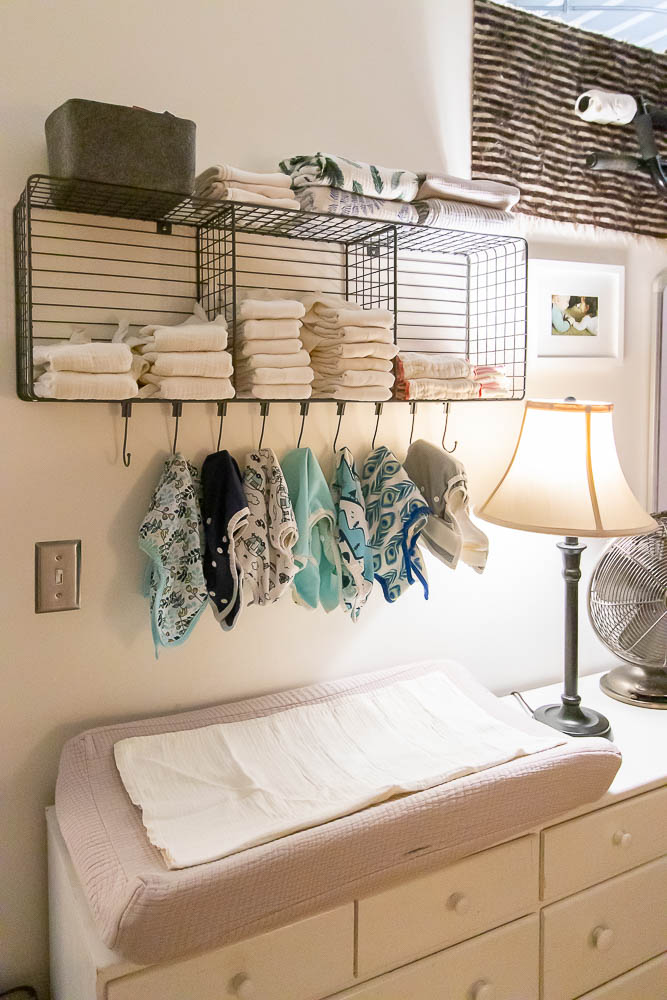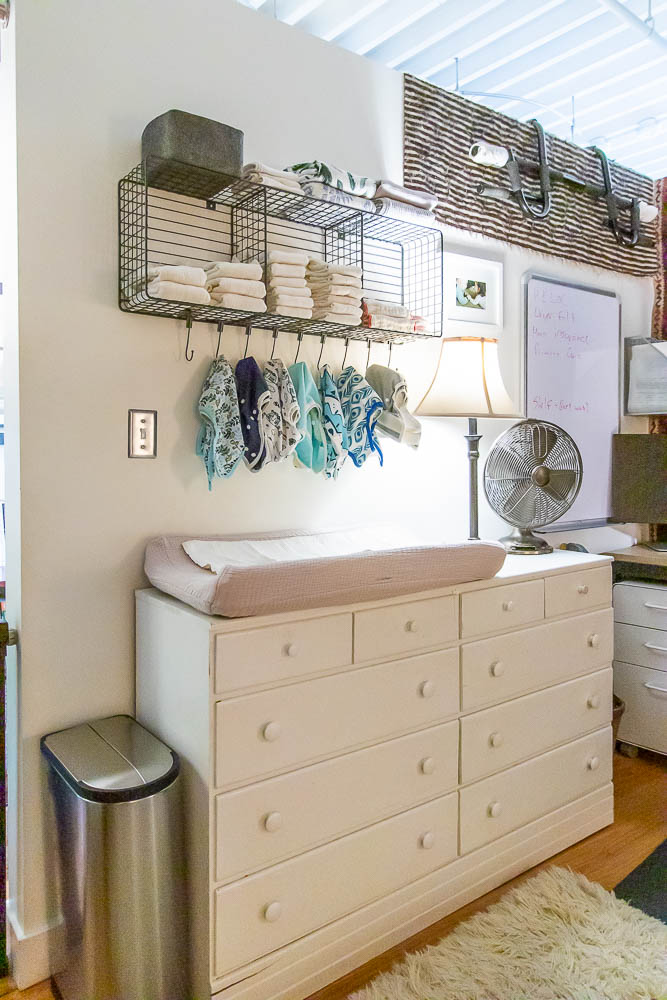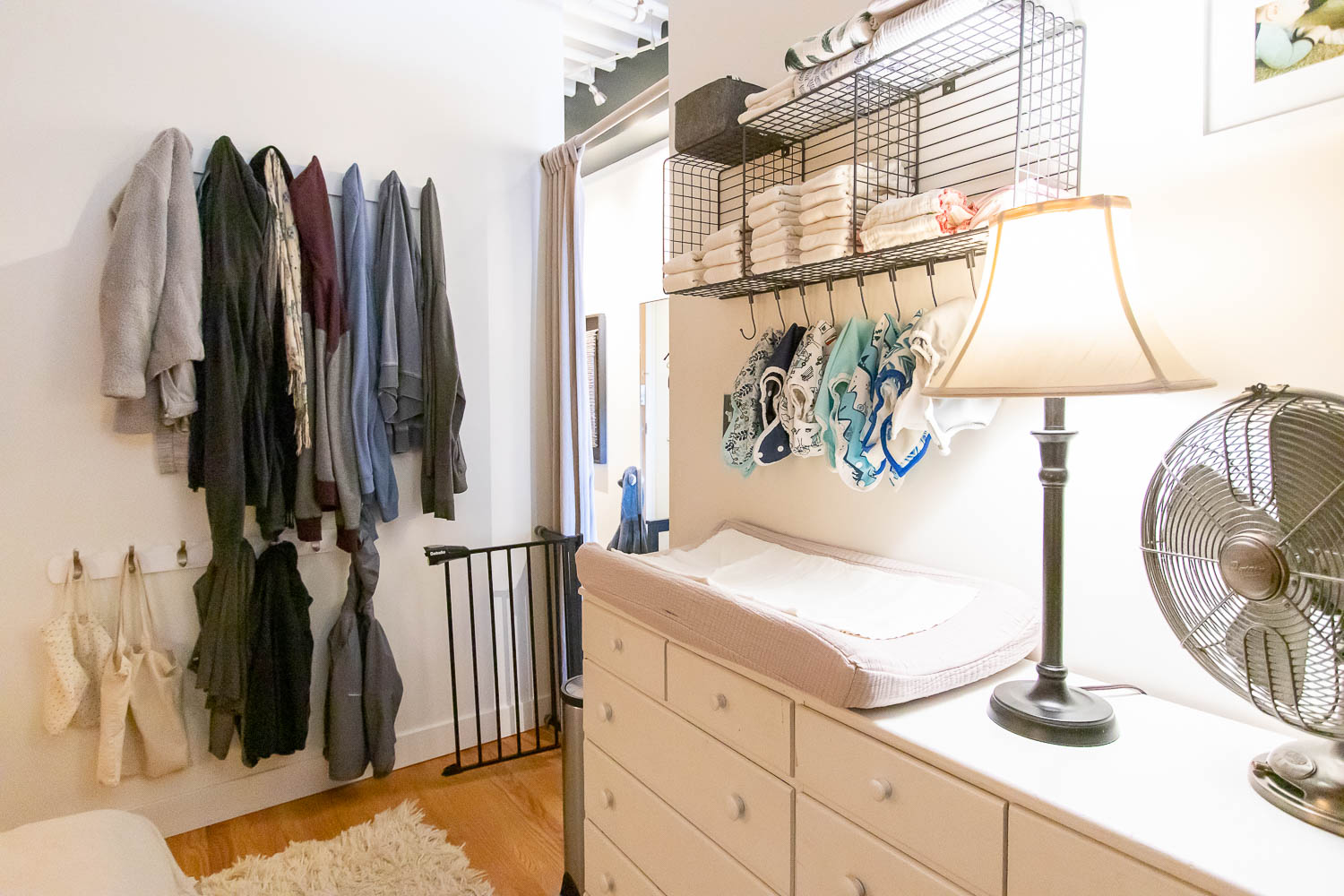
Before starting, I found the idea of cloth diapering overwhelming. I knew many people that used cloth diapers and they were very helpful in helping me understand the process but they all had different systems and different brands. It took a few weeks for me to really get going but once I developed a routine, it was not very difficult and I’m really glad that we choose to use cloth diapers.
I also want to say, cloth diapering does not have to be all or nothing. When we were first starting, the idea of cloth diapering all of the time seemed overwhelming so we decided that we would use disposables when we would be gone from the house for the whole day. We did this a few times but we got the hang of it quickly and it’s actually really easy to do cloth diapering when out-and-about as well. My advice would be start small, don’t worry about being perfect.



Benefits of Cloth
Less Leaking
Cloth diapers were much less likely to leak onto the sheets at night. Reflecting back on this, I’ve realized I’ve forgotten how often we needed to change our bed sheets. We co-slept so if my son’s diapers leaked, the whole bed needed to be changed. We usually were not up for this in the middle of the night so if that happened, we’d but a prefold under the sheets to keep the pee from going unto the cover below and then a large prefold or towel, depending on the wet area over the wet area to prevent us from getting wet. In the morning, we’d change the sheets. We kept a waterproof mattress cover under the fitted sheet to prevent the pee from leaking through.
The main time that the cloth diapers leaked was if you were not diligent about tucking the cotton part fully into the cover. We did use other styles of cloth diapers such as all-in-ones but I found that the flats with a cover were the least likely to leak and really only leaked if they were not put on properly.
Easier Transition to Potty and Underwear
I think it made potty learning easier (I avoid the term “potty training” on purpose – more about that later). It seems like it was very easy for my son to feel when he was wet.
At some point, my son started showing interest in using the potty and we let him know that we had some “undies” if he ever wanted to try them. We started with padded undies from Tiny Undies that they call “training pants.” They have a thick, absorbent cotton layer that absorbs pee but still allows kids to feel when they are wet. Plus they look and function like regular undies in that they need to be pulled down to use them. He really liked wearing these. He’d wear them around the house with just a shirt. When he peed, the undies prevented a major puddle on the ground but he’d still get wet and need to be changed right away.
Options
I spent more money than I needed to because I was curious about all of the different cloth diaper options and wanted to try them all. If I were to go back now and purchase a supply, I would choose 12 organic unbleached flats and 8 covers. The covers are adjustable so each size can be used for a pretty long time, especially the size 2. We used two sizes, size 1 and then size 2 and then he switched completely to undies and we didn’t need the larger ones.
The covers come in two main styles: snap or velcro. They both are good and have benefits and drawbacks. You have to be a bit careful when pulling on the snaps because I think pulling two much is one of the things that wears on the waterproofing and causes them to leak early. The velcro is nice because you can make it fit very accurately. (The velcro covers still have snaps to adjust the size but you can leave those put and only change them when your child grows.)
They do eventually wear out, especially if you use the dryer to dry them so I think it would be better to have more in rotation from early on so you can wash them less rather than have less stock and need to buy more later when they wear out. If you change the wet diaper quickly, you can reuse the cover many times before needing to wash them.
How to Use
The Diaper Setup
I kept the folded diapers on a shelf above my changing table, folded and ready to use. Folding is easier done in advance so they are ready to use. If you fold in advance, then it’s not much different than using disposables. The diaper shelf had a bunch of hooks hanging from below that I used to hand the covers and a couple of all-in-ones. We kept a bowl of water with a pump of soap and a squirt of coconut oil on the changing area to use to clean him. On the shelf, we also kept a stack of reusable wipes that we dipped in the water bowl and used to clean him. All dirty diapers, covers and wipes got thrown into the lined hamper when we were done.
I was very overwhelmed with the prospect of getting the poo out of the diaper and the diaper into the wash but it wasn’t as hard as I anticipated. I read a lot about using a sprayer and that sounded complicated or dipping the diapers or the difference between wet or dry containers. What we ended up doing was using a kitchen spatula to scrap the poo into the toilet (this isn’t always needed, sometimes you can just drop it in) and putting the diaper in a trash can with a lid. We used the 18 Liter Butterfly Lid trash can from Simple Human trash can and kept it in our bedroom next to our diapering area. We were concerned about smells but that was never an issue. We had two waterproof liner bags from Thirsties and when it was time to do a load, we just dumped the whole thing including the bag. We cleaned out the can and then then put in the second bag.
Using the Diapers
My favorite diapers to use were the flats and those can be folded into a variety of different shapes but I found one style of folding that I liked and just always used that one. After removing the old diaper, you just slide the prefolded flat under the hips, pull up the front, wrap the sides and secure. My favorite method of securing was with snappies and we kept a stash on the shelf. You can easily put them on with one hand and they feel much safer and easier to use than traditional pins. After the flat is in place, you slide the cover in place and secure. A very important step is to check and make sure there is no diaper peaking out from under the cover or you can get leaking.
When the clean diapers on the shelf got down to two or three left, or only one cover, I’d throw in the dirty bag to wash.
Travel
When traveling, I carried diapers in a two pocket wet bag. Clean diapers in one pocket (or in a diaper bag if I needed a lot) and used diapers into the wet bag. I used disposable wipes when traveling. When we got home, we cleaned the diapers out with the regular routine.
Caring for Cloth Diapers
Washing
I did a lot of research on different soaps and eco-friendly/non-toxic is important to me so I went with Seventh Generation. I know there are detergents that are better than Seventh Generation as far as being even less toxic but I found this one did a reliably good job of getting the diapers clean.
We washed the diapers on hot and then dried them in the dryer, diapers as well as covers. I’ve since changed our laundry routine and pretty much only do laundry in the evening and then hang it to dry over night so if I was going to do it now, I’d definitely hang dry the covers and would probably experiment with hang drying the diapers. I’m pretty sure they’d dry in time but wonder if they’d be significantly less soft.
I honestly can’t remember exactly what cycles we used when washing but I do remember being very overwhelmed trying to figure that out after reading everything on the internet. My memory though is that it wasn’t that hard to figure out once we started actually doing it. I’m pretty sure that during the newborn stage (before introducing solids) we ran a cold cycle just to rinse everything and then followed up with a hot cycle with soap. As he got older and poop got easier to just dump in the toilet, we switched to just a hot cycle with soap and skipped the rinse cycle first. I never felt that the diapers weren’t getting clean enough or that they needed “stripping.” My son almost never had rashes and we never had to use any diaper creams.

